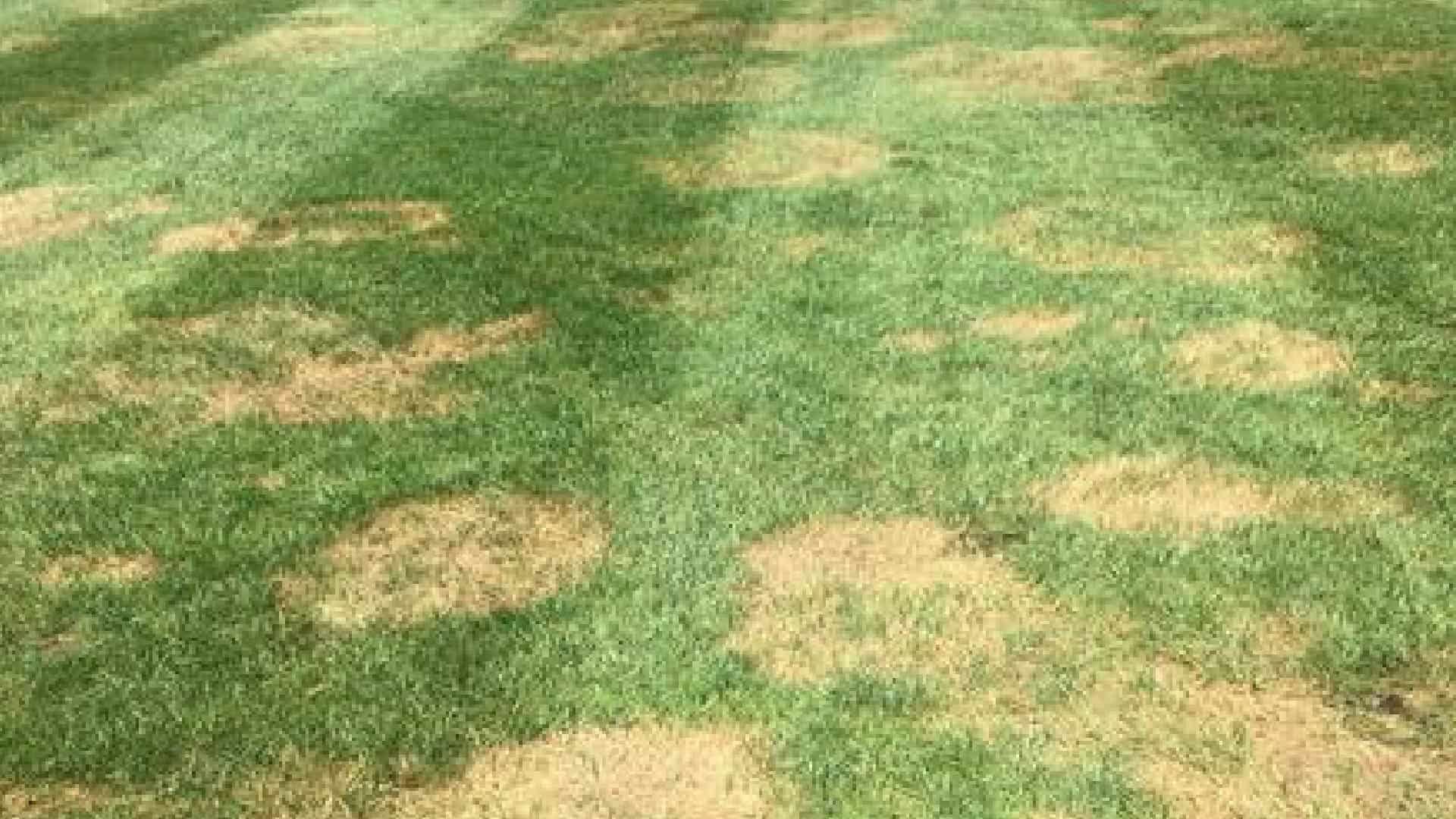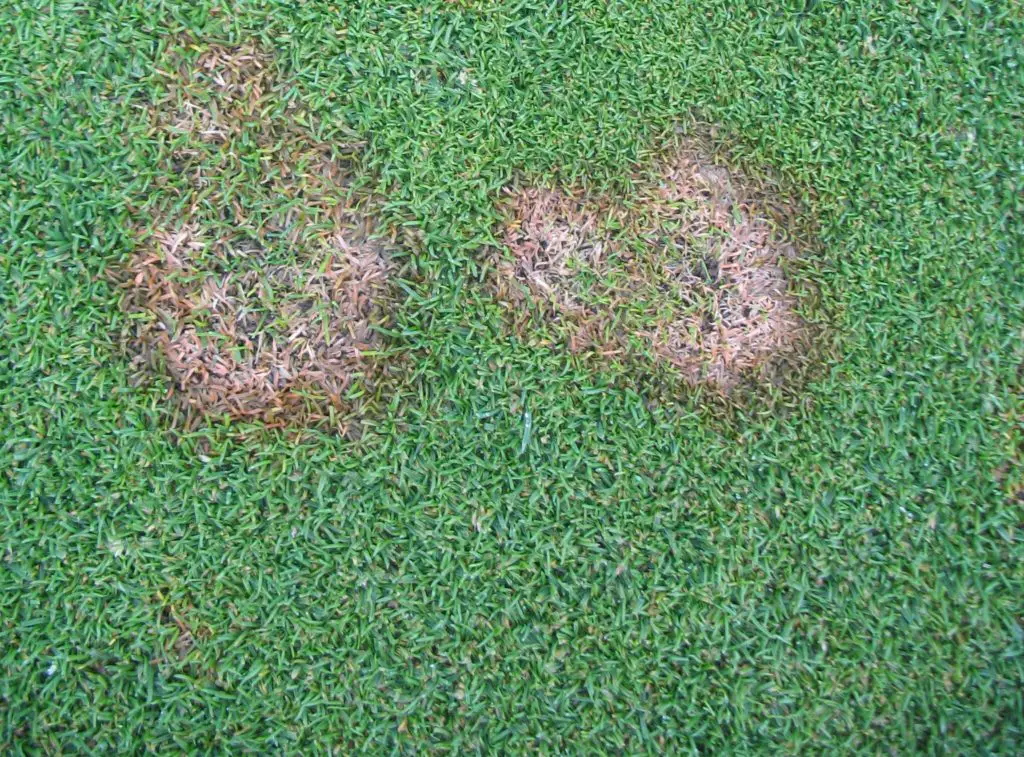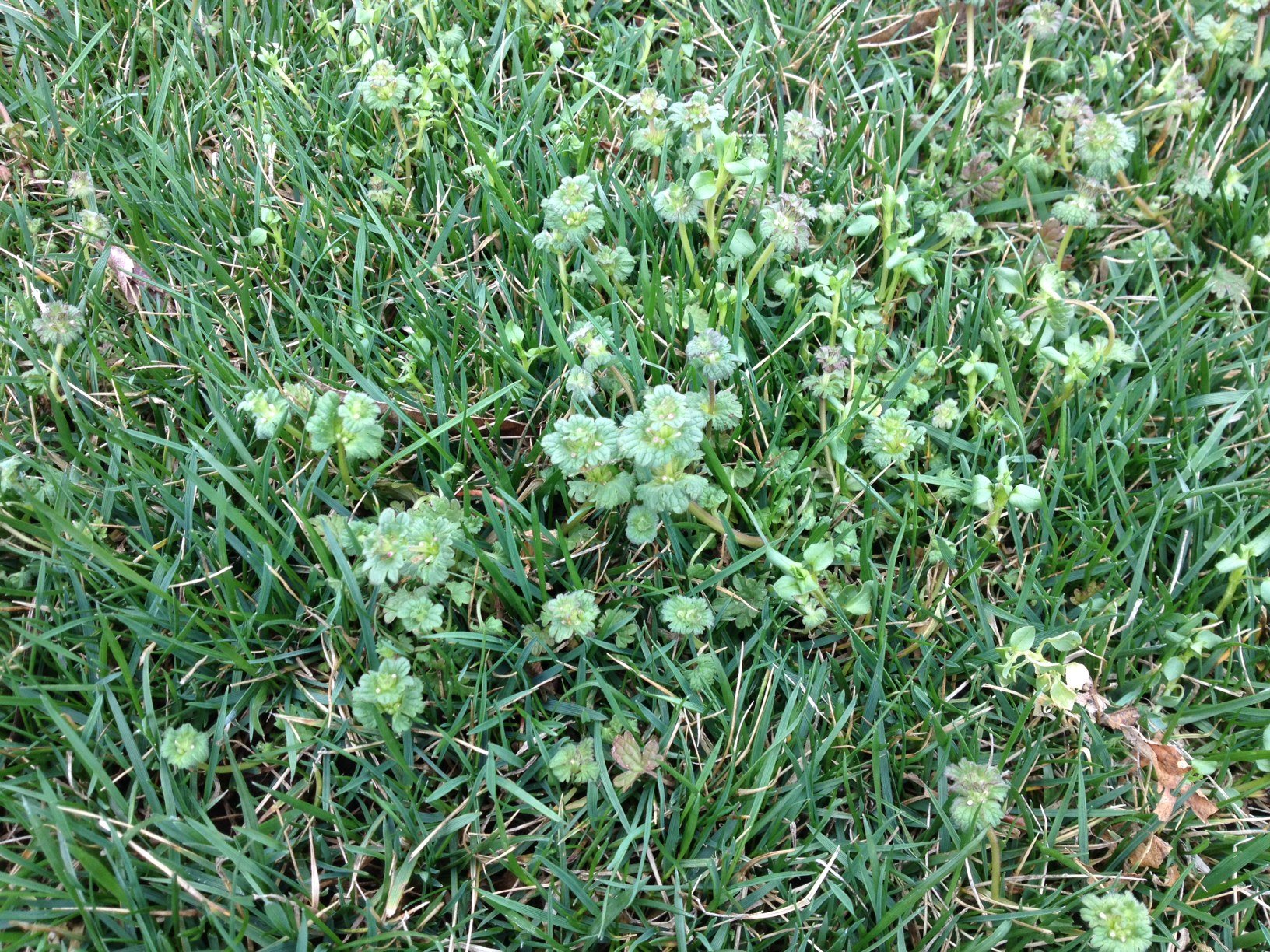How To Identify And Treat Lawn Rust
Do you have orange grass? Does your lawn look like it has a disease? Maybe it seems to be coated with orange-red or yellowish dust?
Or perhaps your boots turn orange when mowing the lawn?
Well it is likely that you have lawn rust , which is a type of lawn fungus.
But dont panic just yet it is quite treatable and your lawn will likely recover from lawn rust. Lets take a look at how to properly identify this fungus, and what you can do about it if your grass has it.
Disclosure: As an Amazon Associate I earn from qualifying purchases. However, this does not impact our reviews and comparisons. All opinions are our own we pride ourselves on keeping our articles fair and balanced. For more info see our disclosure statement.
In This Article:
Apply Your Fertilizer When Grass Is Growing
No matter how frequently you fertilize your lawn, the rule of thumb you should follow is that you should apply fertilizer while your grass is growing the fastest.
Over applying fertilizer runs a big risk to your yard:
- Its bad for the environment, since runoff pollutes local streams.
- It runs the risk of burning your grass, which is when you sap grass of natural nutrients causing it to brown.
- Lastly, youre wasting money by buying too much fertilizer.
Types Of Lawn Fertilizer
Turf fertilization contributes greatly to lawn color, density, uniformity and growth. Properly fertilized grass better competes with weeds, crowding them out. Well-maintained lawns also recover from damage caused by environmental stresses like drought much faster than neglected or improperly fertilized lawns.
Fertilizer comes in many blends of three important nutrientsNitrogen , Phosphorus and Potassium . These nutrients are usually listed on the fertilizer bag in N-P-K order.
Using the right blend of N-P-K for your lawn takes an understanding of the specific needs of your turf, as well as your soil. Testing the soil can be a great first step in knowing what nutrients your lawn needs and what your turf fertilization program should include. Lawn Buddies can do this for you or you can send a soil sample to a local university extension service for testing.
Recommended Reading: How To Stop Racoons From Digging Up Lawn
How Often Do You Have To Wait Between Fertilizer Applications
Fertilizers with a higher nutrient content will mean that you need to wait longer between applications in comparison to lawn fertilizer with a lower nutrient content. Some fertilizers can be applied once every four weeks whereas some you will need to wait as long as twelve weeks before you feed your lawn.
Knowing how long you will need to wait between applications will differ between the specific lawn fertilizer you have purchased.
A good tip to ensure that you dont over-fertilize your lawn is to make a note on a calendar the date you applied the lawn food. Read the instructions on your chosen fertilizer to see when the manufacturer recommends reapplying the feed. Then workout when the feed should be reapplied and add this date to your calendar.
Alternatively, set a reminder on your smartphone to prevent over-feeding.
The recommended frequencies of fertilizer application can be found in the tables further down in this article.
Best Time To Fertilize Your Lawn

Spring means more daylight and warmer temperatures. After a cold winter, this is the weather your grass is craving. If youre unsure of exactly when to lay down your first feeding, you can base it off of the temperature. Ideally, the ground should be around 55 degrees Fahrenheit. Depending on where you live, March to April is the best time to fertilize your lawn. Its also best if your yard is watered a few days before you want to apply the fertilizer, whether thats from rain or a sprinkler.
Fertilizer provides your grass with extra nutrients that help to prevent crabgrass and allow it to grow green and thick. To ensure youre laying the feed correctly, start around the perimeter of your lawn. Then, you can start filling in the middle. Similar to mowing your yard, you should go back and forth in straight lines. And you should always use a lawn spreader instead of your hands to complete the job.
Now that you know that spring is the best time to fertilize your lawn, here are some other helpful tips that will keep your grass thriving.
Don’t Miss: How To Get Stripes On Lawn
Does It Matter What Time Of Day You Fertilize Your Grass
Time of day doesnt matter. But what does matter is the temperature. If its above 90 degrees, then avoid fertilizing. This is because you could burn your lawn the hotter it is outside, the faster things will move through the soil.
When Should You Start Doing Spring Yardwork
Just because we have a few warm days in March, or even February, doesnt mean you should pull on your gardening boots and grab your lawn tools. Make sure you wait until your lawn is mostly green before you go outside and start raking, aerating or mowing. On the other hand, dont wait until its too late in spring to apply a weed control product or plant grass seed. With spring lawn care, its all about timing.
You May Like: Remove Quackgrass
How Often Should You Spray Your Lawn For Weeds
When You Should Spray Your Weedsweedswhenyou shouldsprayingYouyour
. Furthermore, when should I spray for weeds?
For the best results, gardeners should time the weed killer application to take place before weed seeds start to germinate, generally in the early spring. Gardeners often reapply the weed killer approximately eight weeks after the first spraying to help with exceptionally invasive weeds, such as crabgrass.
One may also ask, how do you kill weeds without killing grass? Lawn weed killer Roundup for Lawns is a product that kills off weeds but preserves your lawn. After you spray, it doesnât leave a brown spot it kills the weeds by reaching their roots. It also helps prevent regrowth, even by the most common and invasive weeds.
Thereof, is it better to spray weeds before mowing?
The lawn can become very sick or even die in areas if herbicides are applied to newly mowed lawns, so the general rule is to wait for one week after mowing before applying weed killers to the lawn and to wait one week after applying weed killers before mowing the lawn again.
How do you permanently kill weeds?
But salt can do the job. Bring a solution of about 1 cup salt in 2 cups water to a boil. Pour directly on the weeds to kill them. Another equally effective method of how to kill weeds is to spread salt directly onto the weeds or unwanted grass that come up between patio bricks or blocks.
You May Like: Who Sells Murray Lawn Mower Parts
How Do I Fix My Lawn Full Of Weeds
How to Fix a Lawn Full of Weeds Mow the lawn, setting the blade at high setting. Apply weed killer directly to the weeds in the lawn using a sprayer. Aerate the lawn with a grass or turf aerator. Put down grass seed and pre-emergent weed herbicide, following the manufacturers application instructions.
Don’t Miss: Reel Mower Sharpening Kit Ace Hardware
Why Does The Time Of Year Affect Weed Killers
Spring is the best time of year for applying weed killer. This is because you can catch weeds in their pre-growth state, before theyve had the opportunity to sprout fully. Spring has the advantages of being both warm and wet.
Herbicides in weed killers require absorption from the soil to activate. This absorption can only take place if the soil is moist from the rain. Spring being a typically rainy season ensures that the soil is wet enough to soak up the herbicide, which is then taken up by the plant root.
Without any rain, the herbicide solution will sit on the soil, rather than being absorbed by the plant.
Fall is the second-best season because weed killers thrive on the sudden change in weather. Spraying weed killer in October means that weeds will struggle to survive the winter.
However, not all weed killers contain herbicide, and can therefore be used at all times of year. For example, Foamstream is a herbicide-free weed killer. This means its not affected by the levels of moisture in the soil.
You May Like: Killing Nutgrass With Sugar
How Can I Solve The Problem
Knowing how to treat grass fungus is important for any business with lawns, and at Earth Development, we share our knowledge with you.
Here are the most effective ways you can prevent lawn fungus growth.
- Fungicide and Fertilizer
Feed your grass a slow-release, organic fertilizer. Nitrogen-blended fertilizer can also help prevent dollar spots.
Using a high-quality fertilizer gives your grass the best chance to grow healthy, and when used alongside a good quality fungicide, youâll minimize the chance of growth.
- Mow Your Grass Properly
Mowing grass extremely short might seem like a quick and easy way to minimize the frequency of mowing, but it can causes serious damage to your grass. The shorter the blades, the less light the grass is able to absorb from the sun.
And, as the grass gets less healthy, it becomes easier for weeds and fungus to take hold and destroy your lawn.
Remember to catch your clippings and remove them from the lawn, too, to stop fungus spores from being spread by the mower.
- Water Your Lawn in the Mornings
Itâs always wise to water your lawn between 6am and 10am. It gives the grass time to absorb water, and then plenty of time for the sun to dry it again during the day. Give your lawn 1.5 inches of water per week .
Recommended Reading: Core Aerator Rental Home Depot
Is Baking Soda Good For Your Yard
Baking soda can be good for your yard, but it can also be harmful. An infrequent application of a mild baking soda spray can effectively kill fungus and mildew, and harmful grasses.
However, the qualities that make baking soda an effective pesticide will eventually end up damaging your healthy plants as well. Spraying too much, too often, will begin to corrode the plants.
Too much baking soda can begin to effect the pH balance of the soil as well. When the pH balance falls off, then the soil can become inhospitable. This stops new plants from sprouting, and kills well established plants.
As one of the primary components of baking soda is sodium, over spraying can lead to a build up of salt on plants. In the short term this is okay, and will have no repercussions for edible plants, but can be harmful in the long run.
Always check on a small patch first. As a homemade solution you may want to try different formulas to achieve different results. Hardier plants will withstand a greater application of baking soda, where new growth may find it overwhelming.
Spray a small area first to see how the plants react, and adjust the formula as necessary. Take care not to over spray, as too much may damage.
Other homemade options include apple cider vinegar solutions, mouthwash solutions, and milk solutions.
Maintenance Of Your Lawn After Fertilization

To fertilize a little less, leave the grass clippings on the turf after mowing. This is a natural way of putting nitrogen back into your soil and the roots.
If you are wondering whether and when to fertilize new grass, you can find out here.
To make this technique even more effective, try a mulching blade on your lawnmower. This cuts the grass into smaller pieces that will more readily start the decomposition process in your compost pile.
If your soil is of a heavy-clay nature, or you have a lot of traffic on the grass, then it may be useful for you to consider some type of manual lawn aeration from time to time, if you have a large lawn area to aerate, then you may need to use a tow behind aerator that can be pulled with your garden tractor.
Recommended Reading: Tru Green Cost
How Do I Rejuvenate My Lawn
Use a rake to remove dead grass and roughen the soil, then apply new seed with a drop or rotary spreader. Be sure to press the seed into the dirt with either a lawn roller or gentle, evenly spaced footsteps. Also, try to keep the area moist, and fertilize it with a high-phosphorus seed-starting fertilizer.
Looking After New Lawns
Lawns from turf should be left completely un-used for their first week. Lawns from seed should be left un-used until their first mowing. Avoid using new lawns heavily in their first season.
Newly laid lawns can be fed like established lawns. They need watering, but should not be over watered, as this may result in shallow rooting and poor establishment.
For advice on aftercare of newly sown lawns, see our advice on lawns from seed.
Read Also: Trugreen Annual Plan Cost
How To Treat Your Lawn In Spring
As commercial landscapers, people often ask us how to treat a lawn in the spring, and our reply is not as much how, but when. Living in Columbus, Ohio, it could warm up to 70 degrees in February and snow as late as April, so its imperative to time it right and wait until your lawn is ready. Too early and you could crush or kill new grass. Too late and youll miss precious windows of time for certain lawn applications.
Find out how to treat your lawn in spring to have beautiful grass to enjoy year round.
When And How To Fertilize Your Lawn
In some ways, lawns are a lot like people. Operating at the peak of beauty and performance requires a good diet and proper care. Lush, thick, green lawns depend on properly timed, properly balanced nutrition to look and grow their best. Understanding when and how to fertilize your lawn can help you and your grass stand out from the rest.
Also Check: What Does Quack Grass Look Like
Common Diseases Treated By Fungicides
Fungus or fungi, as they are known collectively, are like weeds in that certain fungi are prevalent in different areas of the country. Where a fungus is found depends on temperature, humidity, and local crops. Here are some of the most common lawn diseases caused by fungi.
Anthracnose – Anthracnose is a fungus that has two stages, one that kills the leaf blades of grass and a second that affects the base of the turf and lower stems of grass blades. Depending on your lawn, you may see one stage or both. Anthracnose can turn grass blades yellow with tan lesions and dark, fuzzy spots in stage one and rot the stems of grass in stage two. The fungus is prevalent when lawns are in times of stress, such as drought and excessive heat. Learn more about anthracnose and how to treat it in our anthracnose guide.
Brown Patch – Like the name implies, the brown patch fungus can cause brown patches to form in your grass during the summer months. Brown patch is typically found in tall fescue, perennial ryegrass, and bent grass, and only kills the leaves of grass, leaving the roots unaffected. To learn more about how to treat brown patch, click here.
Dollar Spot – Dollar spot is a fungus that creates unsightly round patches of dead, bleached grass throughout a lawn. More common on golf courses and closely cut lawns, dollar spot is prevalent in bent grass, Bermuda, fescue, ryegrass, and Kentucky bluegrass. .
When To Treat Your Yard With Granules For Insects
Related Articles
Your home’s lawn may be the ideal area for relaxation and play, but insects often want to share your space the soil beneath the grass blades provides habitat for a pesky ant or flea population. One of the most effective ways to rid your lawn of any insect activity is granules. Typically made of pyrethroid-derived chemicals, these grains attack the insects’ nervous system and kill them. Proper timing is imperative for a safe and effective granule application.
Recommended Reading: How To Fix Lawn Full Of Weeds
When To Fertilize Your Lawn: Timing And Frequency
Choosing the correct time and schedule to fertilize your lawn is essential to a beautiful yard. Here are the best tips on how to get your lawn in its best shape this year.
Lawn fertilizer is like food for your grass, providing it with the nutrients it needs to grow and maintain its healthy, green glow. Each fertilizer uses a unique combination of nutrients, though most include nitrogen, phosphorus, and potassium. These ingredients create a vibrant lawn that resists weeds like crabgrass while creating an optimal environment for good microorganisms and worms.
While its important to fertilize your lawn, throwing down these nutrients at any time of the season wont help your grass reach its full potential. Instead, its important to consider your grass type and the environment you live in before deciding on a time to fertilize. Read on to learn more about the best time to fertilize your lawn, how often you should do it, and the factors that impact growth.
How Short Should I Cut My Grass

Some people think that cutting their grass shorter is better because they wont have to mow as often. The problem is, cutting off more than one-third of the grasss height is one of the biggest mistakes you can make. In fact, the more often you mow, because you arent cutting much off, results in a thicker, healthier lawn.
Read Also: How To Change Oil In A Push Lawn Mower
